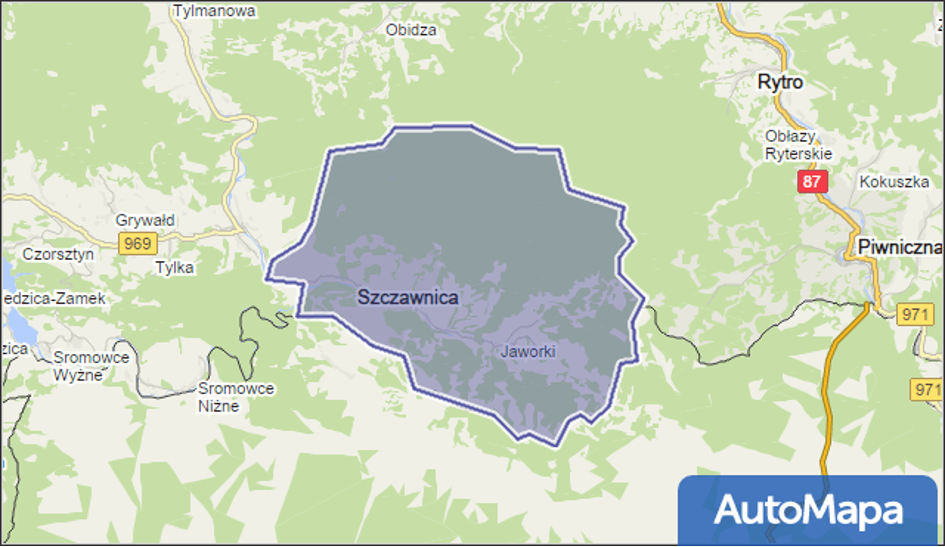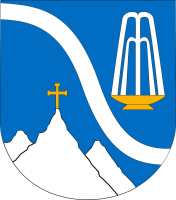
The tourist attractions of the Szczawnica-Zdrój Commune include the following elements:
- a harmonious landscape with aesthetic value, favorable bioclimatic conditions - healing waters, spa town, forests, mountain areas;
- peculiarities of flora and fauna - rocks and groups of rocks - gorges, valleys and gorges, - waterfalls, springs and surges, - caves and grottos, - erratic boulders and boulders, - other geological objects, museums, contemporary cultural events;
- mountain waters, canoeing, horse stables, mountain areas.
Natural objects in the commune are: Góra: Palenica, Bryjarka, Durbaszka, Nature Reserve: Wawóz Homole, Biała Woda, Pieniny National Park.
Historic buildings in the commune include:
- Guest House - a theater and hotel building, located in the Górny Park in Szczawnica. It was built in 1884 by the Academy of Sciences;
- Pieniny Museum in Szlachtowa - the idea of creating a museum dates back to the 1920s. However, it was not until 1957, thanks to the efforts of the Pieniny Branch of the Society of Highlander Culture and Art Enthusiasts, that the collection of exhibits began. The first facility was opened in 1959 in the building of the Guest House in Szczawnica. Unfortunately, after three years of existence, the building was consumed by a fire. The saved collections and new exhibits were moved to the villa "Pałac". The facility was reopened in 1972. The facility operated in this location until 2012, when the villa building was recovered by the heirs of the former owners, the Stadnicki family. In 2012-2014, the museum exhibition was moved to a new seat - the building of the former Border Guard watchtower in Szlachtowa, at ul. Łemkowska 37. The new exhibition was opened on August 23, 2014.
In accordance with the provisions of the Strategy for Socio-Economic Development of the City and Commune of Szczawnica for 2015-2020, factors that inhibit the development of the Commune include, among others:
- poor state of preservation of some of the unique spa architecture and a large number of decapitalized spa facilities in the very center of the city,
- lack of developed internal cooperation tools for the tourism and spa sector (between entrepreneurs from the tourism and spa industry) and poor communication between the tourism sector and local government authorities,
- lack of developed compromise solutions allowing for the development of tourist and spa products while maintaining high respect for the unique natural and landscape values of the area,
- poorly diversified gastronomic base,
- insufficiently (compared to expectations) developed sports and recreational infrastructure,
- ecological problems (significant air pollution, especially in spa zones,
- lack of systemic solutions for the promotion of a tourist and spa product as well as modern tools and solutions supporting the development of tourism (booking IT systems, information, etc.),
- heavy traffic in the center of the health resort, unregulated parking issues,
- unregulated ownership status of some real estate,
- chaos and spatial disorder in the lower part of the health resort,
- existing areas with a significantly worse condition of technical infrastructure (the city area belonging to the Health Resort, poor condition of roads leading to mountain settlements: Gabańka, Przysłop, Groń),
- insufficient cultural and educational offer (both for residents and visitors) - with regard to tourists, this applies especially to periods outside the main tourist season,
- high investment pressure on areas with outstanding cultural, natural and landscape values,
- planning restrictions preventing the expansion of the accommodation base in the very center of the health resort,
- insufficient activity in promoting local traditions and preserving the identity of a place in spatial activities (no system solutions),
- significant vehicle traffic in zone A of the health resort and no "barrier" parking lots,
- poor use of traditional architectural details in creating public space (e.g. elements of small architecture),
- condition of road infrastructure - no sidewalks outside the city center, no bicycle paths,
- the cultural heritage of the Pieniny highlanders not fully used to build the atmosphere of the place (frequent instrumental treatment of the "highlanders" without delving into the cultural context).


